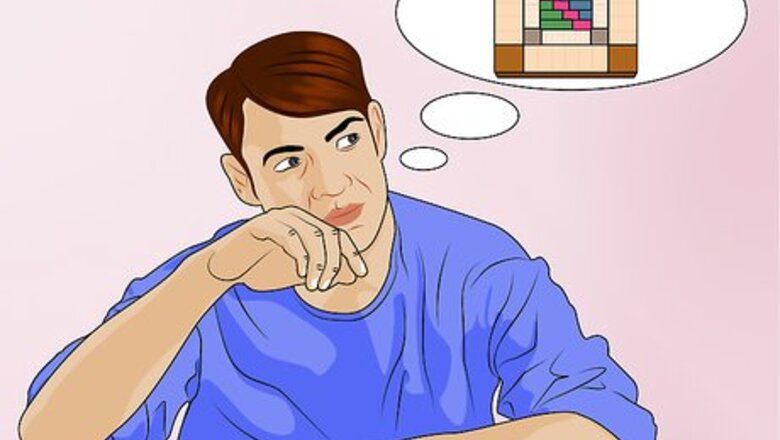
views
Creating Your Game
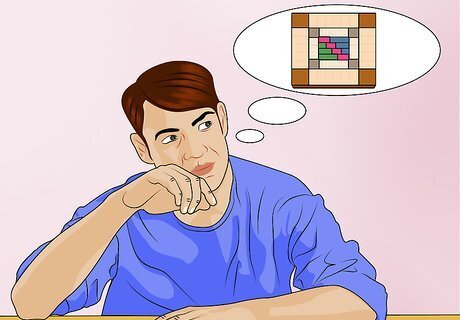
Think of a unique theme for your game. Monopoly is easily customized and all you need is an idea to get started. You can think globally, like making an ocean-themed Monopoly, or personal, like one based on the town you live in. Be careful not to be too specific. If you're theme isn't broad enough, you might not have enough options to fill out all of the railroad spaces or Community Chest cards without compromising the overall theme. Pick a name for your game based on the Monopoly formula, like "Dog-opoly" or "Elvis-opoly."
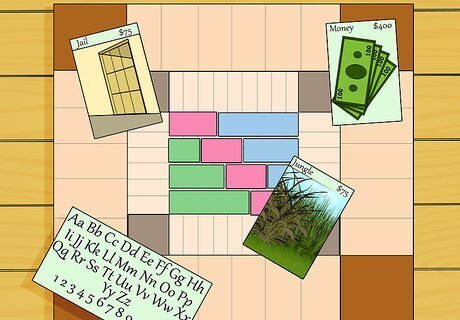
Match the playing spaces and images to your theme. For example, if you were making a medieval time period board, you could use a calligraphy script for the spaces and a dungeon instead of the traditional jail cell bars. You'll need four diamond-shaped spaces in the four corners and measure out nine rectangular spaces in between for the property spaces.
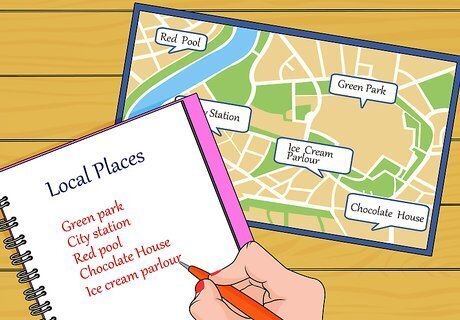
Plan out personalized property spaces. Make a list of different landmarks or places that can be bought and sold. You can be whimsical or logical, like picking ice cream flavors or skyscrapers that exist in New York City. For a San Francisco themed game, you'll want to pick popular places such as Lombard Street or Embarcadero Street, or Ghirardelli Square and Fisherman's Wharf. In total there are 22 property spaces. You will need to pick eight different colors for each of the groupings.
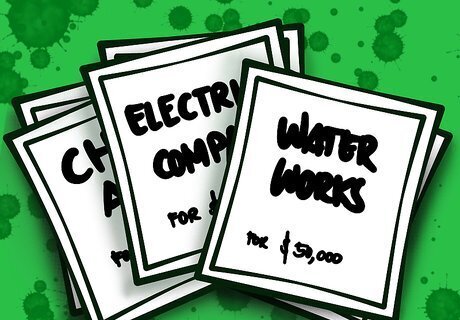
Pick out the secondary playing spaces. After the property spaces, you'll need four railroads, three Chance spots, three Community Chest spaces, and three utility spaces with their monetary values. Additionally, remember to customize the 'Start' space as well as the other corner spots. Make a "Go to Jail" space and a "Jail" Space. Be creative with how you want your fellow players to be ensnared. If you're making a jungle-themed game, you can make a space for a "broken swinging vine" that sends you to the "quicksand pit."
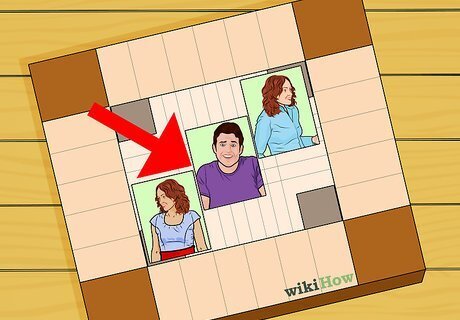
Use the large empty space in the middle of the board to elaborate on your theme. If this is a gift for someone's anniversary for instance, you can Photoshop or paste actual photos of the couple around your customized Monopoly name.
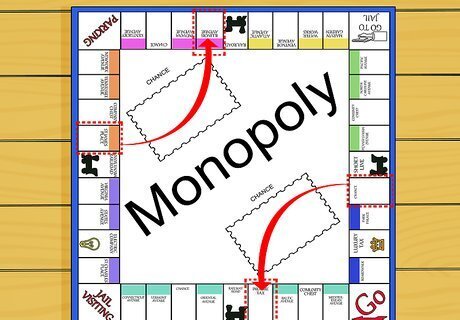
Decide if you want to change any rules. Since you've already changed the board you have the option to personalize the game play as well. For example, you can rearrange the property spaces to make it more difficult or alter how long someone remains in jail. But if you don't want to lose too much of the original game, you can print out a copy online or use an old version's copy to keep in the board box.
Building Your Board
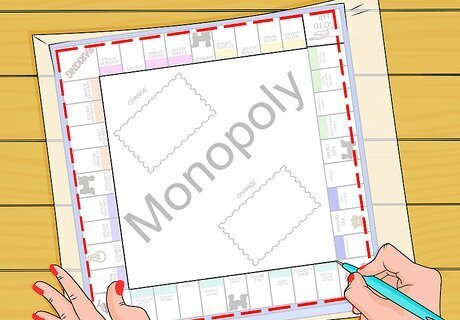
Use a template to design your board. The easiest option is to reuse an old Monopoly board for a reference of the layout. You can place your design directly on top of the old board and copy the dimensions for playing spaces. There's no need to cut or measure, you can trace over the lines and markings to finish your game. If you don't have a Monopoly board nearby, you can find images online of the classic design. There are also many people who have uploaded their own personalized Monopoly games and templates onto fan sites which you can use for inspiration.
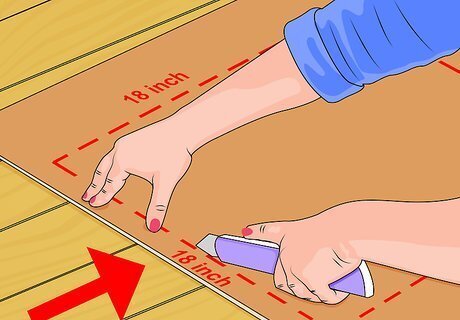
Construct the board. If not using an old board, you will need any material that can be easily sized to 18x18" and folded for storage, such as card stock, cardboard, or a weighted paper. The normal Monopoly board is slightly smaller than 18" but the extra length will give you more space for customizing. Whatever size you make your board, make sure you have a box or storage container that will fit it. Whether you choose to fold your board or leave it open,make sure that you pick a storage container that fits.
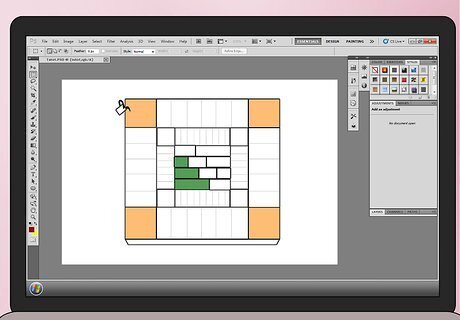
Draw your board by hand. You can either draw out the playing areas of the board with art supplies or digitally with computer programs. Both give you freedom to play with colors and images, but handmade may be easiest if you aren't as familiar with digital programming. The main choice you have is if you want a handmade feel to the game or a polished, computerized replica. A ruler or straightedge is going to be your best friend. Measure out the playing spaces and the spaces for the Community Chest and Chance cards so that they are even and consistent.

Use a computer program instead to make a more precise template. You can download a template and tweak the design in Photoshop or create a board design from scratch using a drawing program or website. There are free online programs such as Google Draw that you can use instead of buying a program. Since the board size is bigger than a normal printer's capacity, you may need to split the image in your editing program to print out over several sheets of paper. With a computer you can also mimic the traditional Monopoly fonts.

Create a PDF file of your board and print it out as a sticker at a copier store. Then, you can lay the sticker over an old board or the one you created. Make sure to smooth out any bubbles as soon as possible. You can use a printed sticker or paper to cover the old game. Use a razor blade to cut a slit through the covering so it can fold into itself for storage.
Creating the Cards
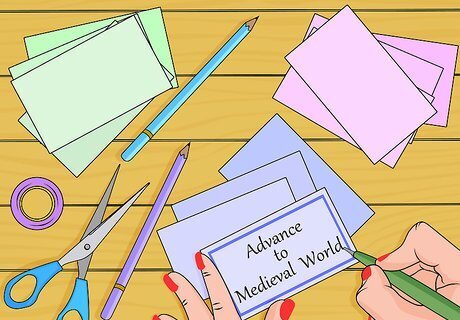
Make your Chance and Community Chest cards. Both cards need 16 cards in each deck. Keep the cards' actions the same but customize the text to fit your theme. For example, instead of the card that says "Advance to Pall Mall", you could write "Advance to Disney World" if your game is based off of Florida. For Community Chest cards, you could change "Pay School Fees" to "Pay for Beach Parking." Card stock can be cut into any shape or size and works best with most markers, pens, pencils, and paint if you're going the handmade route.
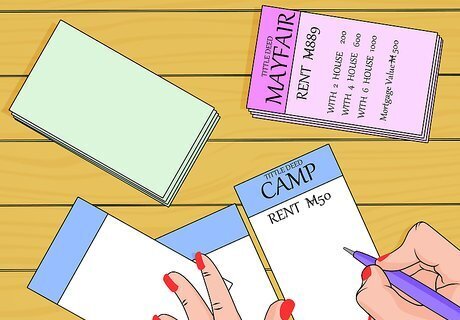
Make Realty cards for each of your properties. For simplicity, use the same rent and mortgage amounts as the corresponding original cards. Don't forget to make sure that you coordinate handwritten on the back of the cards or added as a small printed office label sticker. You can also print directly onto card stock if you're using a template in Photoshop or Microsoft Word. For all of your cards, laminate them for longevity and better protection against infamous Monopoly feuds.
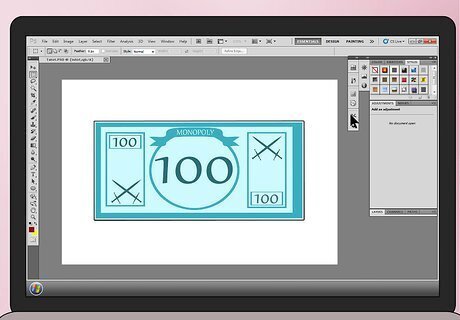
Create a unique currency. You can either buy generic or replacement Monopoly money at a game store or online or create your own. If you don't buy replacement money you can draw or print it as well. Be creative with the denomination designs. For example, if you're doing a game based on Quentin Tarantino movies, you could photoshop his character's faces onto the money and add fake blood splatter for a fun effect. You can also name your bills and include it on the dollars themselves. "Credits" work for video game based Monopolies and "Bison Bucks" for a Wild West themed game.
Making the Markers
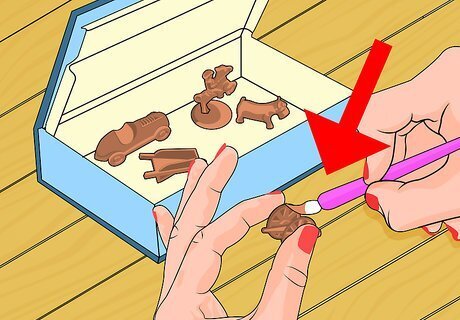
Choose your tokens. Traditionally there is anywhere from two to eight players in a single game. Every player needs a token so plan to make about eight or more tokens if you want to change the rules to include more players. You can reuse the old classic Monopoly tokens or design your own. Use your imagination; if you're making a game that's movie-themed, you could make a tiny popcorn token, movie reel, Hollywood star, or an award statue token.

Sculpt your tokens. Sculpting clay or paper maché are easy materials to use to make miniature tokens. You can also use pre-existing items from around your house or any toy and game store. For example, if you're making a superhero themed game, you can use action figures for tokens. Try to use small items as the spaces on the board are not very large. Fimo or Sculpey are two reliable and easy-to-find materials for making your own tokens. Don't forget that you need dice as well. If you aren't going to buy or use your own, you can make a die while sculpting your other tokens.
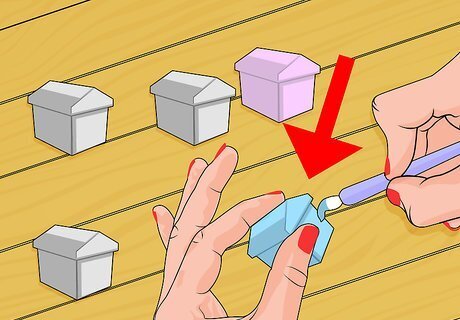
Build your houses and hotels. Pick something creative but easy to recreate several times since you're going to need 32 houses and 16 hotels total to accommodate for game play. For example, if you're making a Texas-themed game, you can make the pieces look like the Alamo and an oil rig. You could always repaint old Monopoly houses and hotels different colors to match the rest of your game's color scheme. You can make the game more complicated by making houses and hotels of different values. For example, you could construct a regular-looking home, a skyscraper, and a castle in the same game and make each of their rent payments incrementally more expensive.















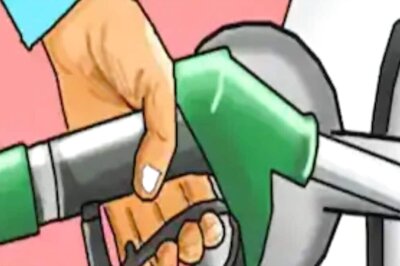



Comments
0 comment